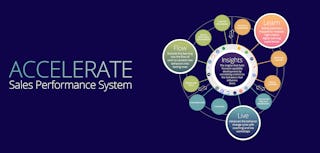Sales Training Does Not Equal Sales Performance

Investments in Sales Training and Enablement are Rising as Quota Attainment Declines
As a global leader in sales training and performance improvement for nearly 30 years, at Sales Performance International (SPI), we’ve reached the conclusion that sales organizations need to fundamentally re-think their approach to performance improvement initiatives.
Why?
In the United States alone the annual spend on corporate sales training is estimated to be at least three billion dollars. Yet, in spite of these investments – and billions more invested in sales technology – annual quota attainment is on a five-year decline. In fact, a recent HubSpot study of 200 enterprise organizations concluded that some $66 billion spent on overall sales enablement has resulted in no major productivity increases.
Clearly, some companies have realized improved sales effectiveness and positive business outcomes from investment in professional development for sales people But overall, the bottom line (literally) is that training investments are not resulting in the type of behavior changes that drive measurable outcomes.
Aligning Training Investments with Critical Business Goals
In our three decades of observation, most companies struggle to ‘connect the dots’ between key functional areas that have a stake in sales training and transformation. As depicted below, each of these areas tend to have a different ‘lens’ and perspective driving their priorities. As a result, the organizational forces driving and funding sales training investments can have a major impact on the approach taken (and results attained).
Transforming sales training into performance development requires a fundamental shift in mindset, beginning with a clear understanding of business goals (growth strategy), which leads to related sales metrics. While it may seem obvious, many sales training initiatives fail to identify clear business outcomes and lack a systemic view of how new knowledge and behaviors will impact those results.
Different growth strategies (e.g., market penetration) drive variation in the specific sales goals and metrics that define success. In turn, these goals and metrics can require very different competency emphasis for professional development.
Moving from Learning Journey to Performance Journey
Many sales training programs tend to provide ‘general’ education for the sales organization, but don’t identify which capabilities are the most critical to meet specific sales goals. In addition, training projects rarely include a rigorous approach to apply observable behavior change – from both the seller and manager perspective.
As a result, adoption and behavior change take place on an ad hoc basis – from team-to-team and individual-to-individual. This approach leads to the random outcomes that characterize many improvement initiatives. Five key steps can help ensure that training investments translate consistently to desired business outcomes:
- Align high-impact competencies with specific sales goals
- Objectively assess the current state of sales talent
- Incorporate a Learn>Practice>Apply>Coach methodology for attainment of mastery
- Use technology-enabled tools to reinforce and accelerate daily application
- ‘Close the loop’ by continually measuring competency progress versus sales results
Download the Brief: Sales Training Does Not Equal Sales Performance

Brief: Sales Training Does Not Equal Sales Performance
DownloadGet industry insights and stay up to date, subscribe to our newsletter.
Joining our community gives you access to weekly thought leadership to help guide your planning for a training initiative, inform your sales strategy, and most importantly, improve your team's performance.






